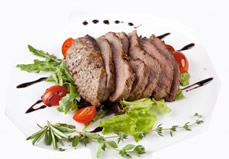Many people are familiar with Dr. Simeons original HCG diet protocol, and its 500 calorie per day phase two requirements. Along with this were other requirements such as specific foods to eat (not a particularly long list) as well as prohibitions against exercise on the diet. Over the years, this has proven to be a very effective method, albeit a difficult one for some people to commit to given these restrictions. As a result, many researchers and physicians have designed a number of alternative strategies, each with their own clinical support. Most of the diet plans introduced since the original method was created have centered around making it easier to follow the diet, and less strict, but the weight loss results they offered have often not been verified to be the same as the original method.
 The most promising one, is actually the one we advise for our customers as well. The modern “OWL” approach is now being highly recommended for new dieters of the HCG protocol as it helps to limit the difficulties often faced in phase 2, but also enable people to lose the same amount of weight in the same time period. At a higher 700 calories per day, and offering a much greater variety of food choices, this method is much simpler and easier to stick to than the original Dr. Simeons approach. It also has the added benefit of being just as effective, with average weight loss that is identical to the original methods.
The most promising one, is actually the one we advise for our customers as well. The modern “OWL” approach is now being highly recommended for new dieters of the HCG protocol as it helps to limit the difficulties often faced in phase 2, but also enable people to lose the same amount of weight in the same time period. At a higher 700 calories per day, and offering a much greater variety of food choices, this method is much simpler and easier to stick to than the original Dr. Simeons approach. It also has the added benefit of being just as effective, with average weight loss that is identical to the original methods.
How the OWL Approach Differs
The modern HCG approaches always center on changes to the foods you eat as well as your total caloric intake. The OWL approach, which is what we advise for our customers, particularly first time users, is a 700 calorie per day approach that differs significantly from the original protocol. Rather than being restricted to only eating a handful of proteins, vegetables and fruits (such as cabbage, grapefruits and apples) you are permitted to eat foods of all types, so long as they are low in carbs. This includes things that were typically excluded from the Dr. Simeons method as developed, such as carrots, pineapples, and beets. Sugars do still need to be limited, as these are sources of empty carbs (which are turned into fats in our body) but otherwise nearly all fruits and vegetables are permitted on this approach.
One of the biggest problems for customers who try the original protocol as specified of 500 calories per day, and a handful of vegetables and fruits, is metabolism degradation. Over time, our bodies will actually shut down its metabolism due to a lack of variety within foods, and various nutrient deficiencies. The modern approach for weight loss on the HCG diet attempts to fix this major problem. In addition, most of our customers like exercising somewhat in phase two, as muscle actually boosts metabolism. This is not permitted on the 500 calorie per day plan, but is on the modern approach. Moderate daily exercise (up to 30 minutes of cardiovascular exercise for example) is allowed and even encouraged.
The choice a person makes on which diet they want to follow is theirs, however, we do recommend what physicians often do and go with an easier diet that offers the same great results. Taking in fewer calories per day may seem like it would provide huge benefits, but due to the complexities of metabolism and how it reacts to food, and such few calories over time, can really impact your weight loss in the long term. Also, the modern OWL method actually allows customers to stay in phase 2 for up to 57 days, significantly longer than the original protocol’s 43 days.
